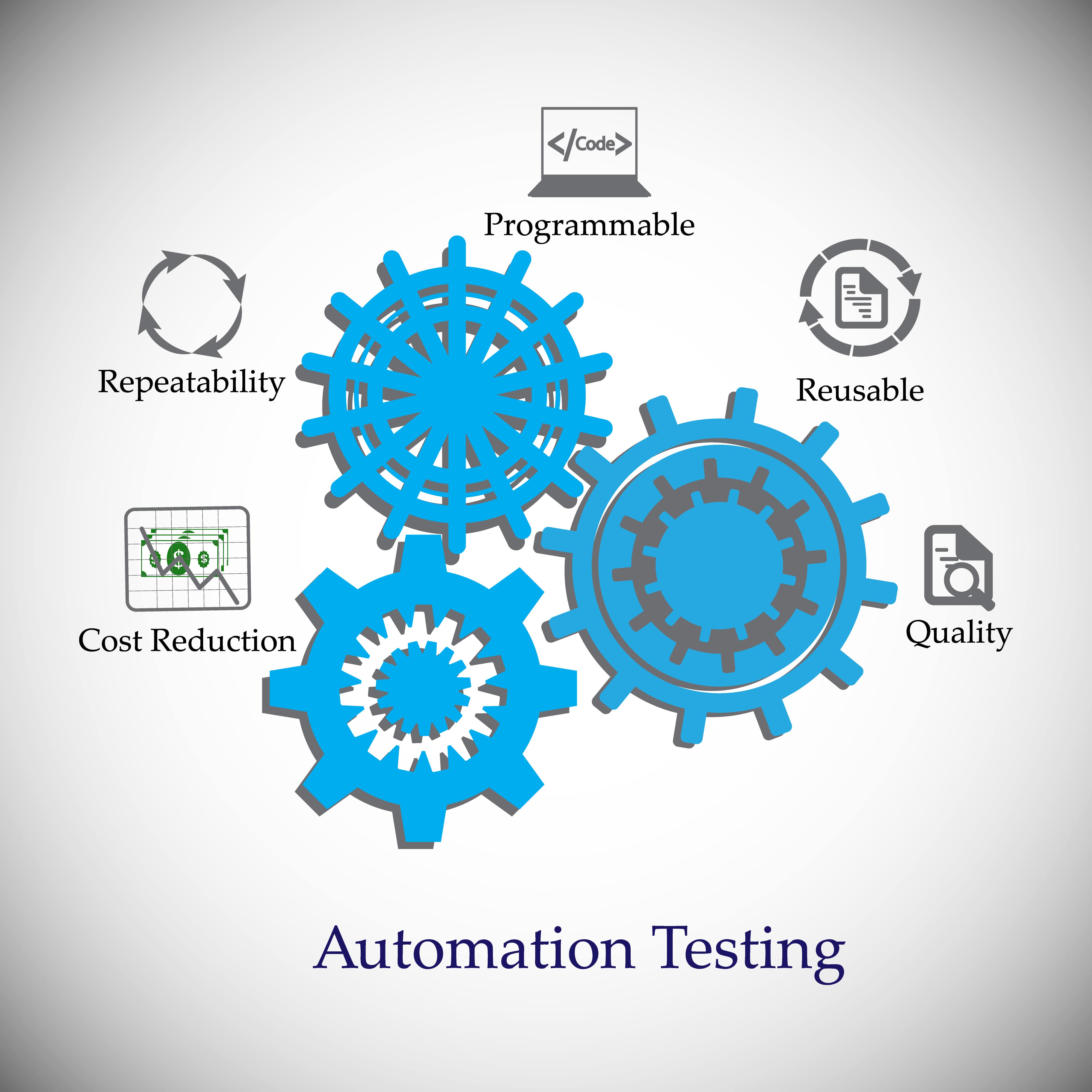Automation Testing Frameworks: Streamlining Intricate Testing Situations
Automation Testing Frameworks: Streamlining Intricate Testing Situations
Blog Article
From Guidebook to Automated Screening: A Comprehensive Overview to Transitioning Smoothly and Properly
In the realm of software testing, the shift from guidebook to automated processes has actually come to be a progressively important change for organizations looking for to boost effectiveness and accuracy in their testing practices. As technology remains to advance, the demand for smooth and reliable automatic screening techniques has never been much more pressing. The journey from handbook to automated screening is not without its obstacles, yet when come close to purposefully and with a clear strategy in mind, the benefits can be substantial - automation testing. In this extensive guide, we will check out essential steps and considerations essential for an effective transition, from the preliminary selection of tools to the integration of automation right into existing workflows. Remain tuned to discover the insights that will certainly aid lead the way for a smoother and extra efficient screening procedure.
Benefits of Automated Examining
Automated testing provides many advantages, boosting efficiency and precision in software application development procedures. Automated tests can be run concurrently on several gadgets and running systems, drastically speeding up the screening phase contrasted to manual screening.
Moreover, automated screening makes sure a higher degree of precision in spotting defects. Since automated examinations adhere to predefined scripts, human error is decreased, causing even more reliable examination results. Uniformity in screening is also improved, as automated tests implement the very same steps precisely each time they are run. This consistency is essential in making certain that all functionalities of the software are completely checked, decreasing the likelihood of undetected insects slipping via to production.
Picking the Right Tools

Firstly, evaluate your objectives and requirements. Understand the range of your task, the technologies included, and the capability of your group. This evaluation will certainly aid you establish the abilities and functions you require in your testing devices.
Second of all, take into consideration the compatibility of the devices with your existing processes and systems. Smooth assimilation with your present software development lifecycle is necessary to guarantee a smooth change to automation.
In addition, review the scalability and adaptability of the devices. As your testing needs advance, the devices must be able to adapt and accommodate adjustments effectively.
Last but not least, factor in the support and community around the devices. When executing automated testing, durable assistance and an active individual neighborhood can supply useful sources and assistance. By meticulously considering these aspects, you can pick the right devices that line up with your demands and established the phase for a successful transition to automated screening.
Writing Efficient Examination Manuscripts

When crafting examination scripts, it is necessary to take into consideration the details needs of the software being examined see this site and make certain that the manuscripts resolve all vital functionalities. Descriptive and clear naming conventions for examination manuscripts and test instances can enhance readability and maintainability. In addition, incorporating error handling devices within the test scripts can assist in identifying and dealing with concerns quickly.
Additionally, organizing test scripts right into modular elements can boost reusability and scalability, decreasing redundancy and boosting performance in examination manuscript upkeep. Routine evaluations and updates to examine scripts are vital to keep pace with progressing software application needs and functionalities. By complying with these principles, testers can create effective and durable examination scripts that contribute substantially to the success of automated testing procedures.
Integrating Automation Into Workflows
Efficient assimilation of automation tools right into existing workflows improves and streamlines processes performance within software program growth cycles. When incorporating automation into process, it is crucial to identify recurring tasks anchor that can be automated to conserve time and decrease human mistake. By flawlessly integrating automated screening devices like Selenium or Appium right into the software program development lifecycle, groups can achieve faster feedback on code changes, causing quicker pest detection and resolution. This integration allows for continual screening throughout the development procedure, making sure that any type of concerns are determined at an early stage, leading to higher software application quality. In addition, automation can be utilized to set off examinations instantly after each code dedicate, giving instant validation and liberating testers to concentrate on even more complicated scenarios. Proper integration of automation tools requires partnership between growth, screening, and procedures groups to develop a unified process that enhances performance and effectiveness in supplying high-grade software program products.
Ensuring a Smooth Transition
Successfully transitioning to automated testing involves careful planning and mindful execution to reduce interruptions and take full advantage of effectiveness in the software program development process - automation testing. To make sure a smooth transition, it is vital to start by performing an extensive analysis of the current testing processes and determining locations where automation can bring the most significant benefits. Involving with all stakeholders at an early stage at the same time, consisting of designers, testers, and job supervisors, is critical for amassing support and buy-in for the automation initiative
Interaction is essential throughout this transition stage. Clear communication of the goals, benefits, and expectations of automated testing assists to handle any Source kind of resistance or worries that may arise. Additionally, offering ample training and sources for staff member to upskill in automation tools and methods is vital for making sure an effective transition.

Conclusion
Finally, transitioning from guidebook to automated testing offers countless benefits, including increased performance and integrity. By choosing the ideal tools, writing efficient test scripts, and integrating automation perfectly into operations, companies can make certain a effective and smooth transition. It is necessary to accept automation as an important property in software application screening processes to improve total quality and performance.
In the realm of software application testing, the shift from handbook to automated processes has become a significantly essential transition for companies looking for to enhance effectiveness and accuracy in their screening techniques. Automated examinations can be run all at once on numerous tools and operating systems, significantly speeding up the testing stage contrasted to hands-on screening. Consistency in screening is likewise boosted, as automated tests execute the same actions precisely each time they are run.To make certain the successful application of selected screening tools, the development of effective examination scripts plays an essential function in confirming the performance and performance of automated procedures - automation testing. By adhering to these concepts, testers can create durable and reliable examination scripts that contribute substantially to the success of automated testing procedures
Report this page